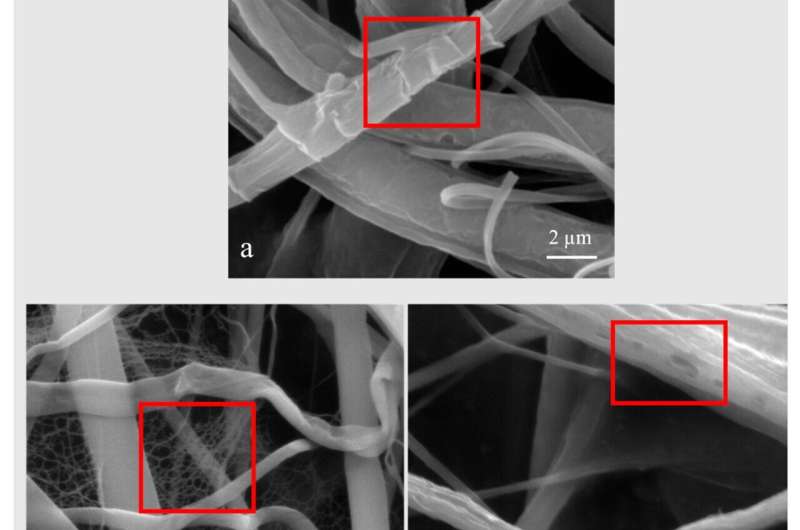
A new technique for electrospinning sponges has allowed scientists from the University of Surrey to directly produce 3D scaffolds—on which skin grafts could be grown from the patient’s own skin.
Electrospinning is a technique that electrifies droplets of liquid to form fibers from plastics. Previously, scientists had only been able to make 2D films. This is the first time anybody has electro-spun a 3D structure directly and on-demand so that it can be produced to scale. The research is published in the journal Nanomaterials.
Chloe Howard, from Surrey’s School of Computer Science and Electronic Engineering, said, “After spinning these scaffolds, we grew skin cells on them. Seven days later, they were twice as viable as cells grown on 2D films or mats. They even did better than cells grown on plasma-treated polystyrene—previously, the gold standard. They were very happy cells on our 3D scaffolds.
“Our findings pave the way for harvesting a patient’s own skin cells and multiplying them. These grafts could treat chronic wounds better and faster.”
Scientists prepared a solution that included gelatin and polycaprolactone (PCL)—a biodegradable polymer that is known to be compatible with human tissue. They pumped this solution through a syringe into an electrical field, which stretched it into nanofibers.
This process is simple, scalable, and cheap. The researchers now hope it can be used in other medical applications.
Dr. Vlad Stolojan, associate professor in Surrey’s Advanced Technology Institute, said, “Electrospinning is extremely adaptable. We can mimic the way that muscle fibers behave by spinning fibers that align in the same direction. This technique could one day create artificial skin, bone and cartilage too—helping people recover from wounds quicker, and with better long-term results.”

